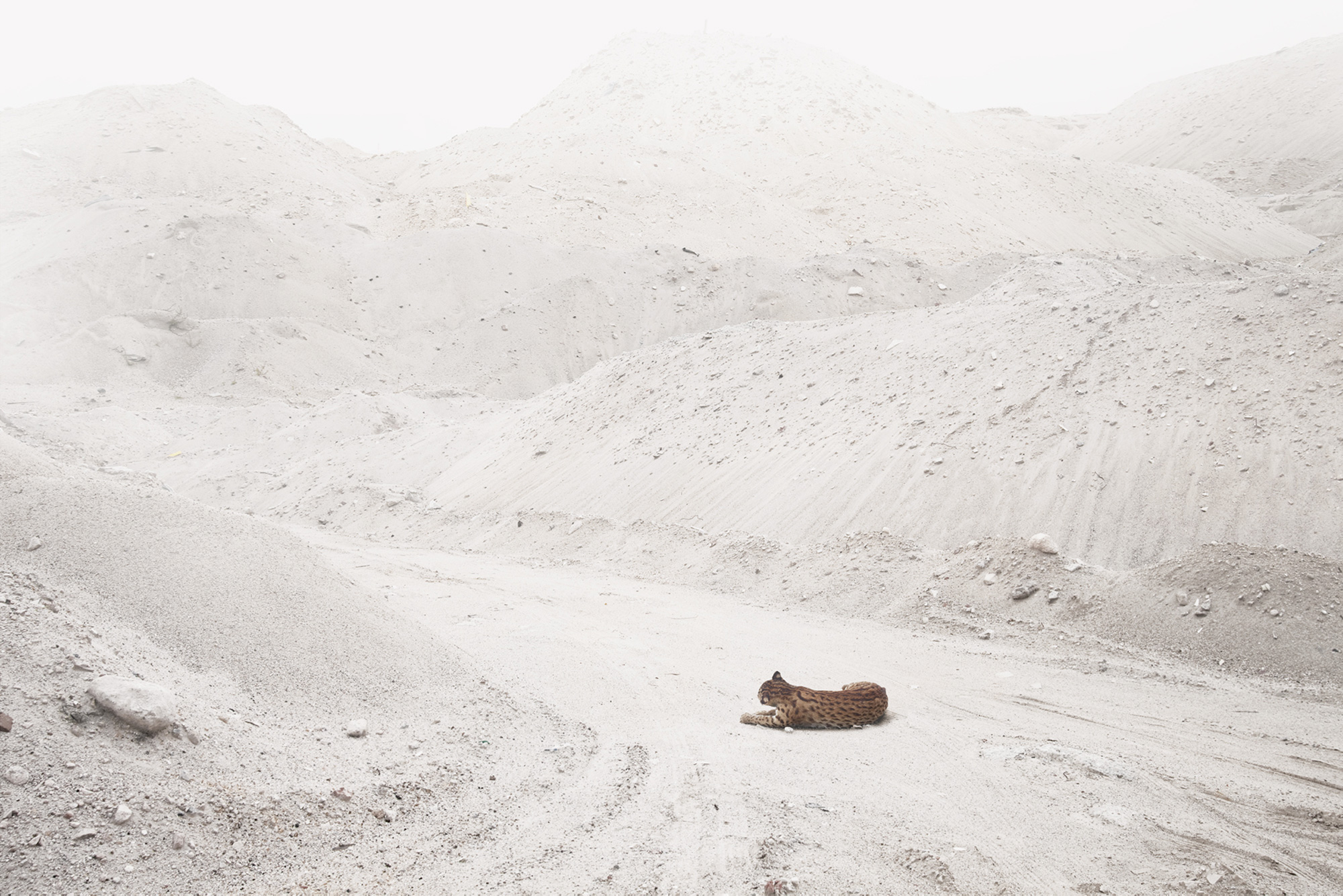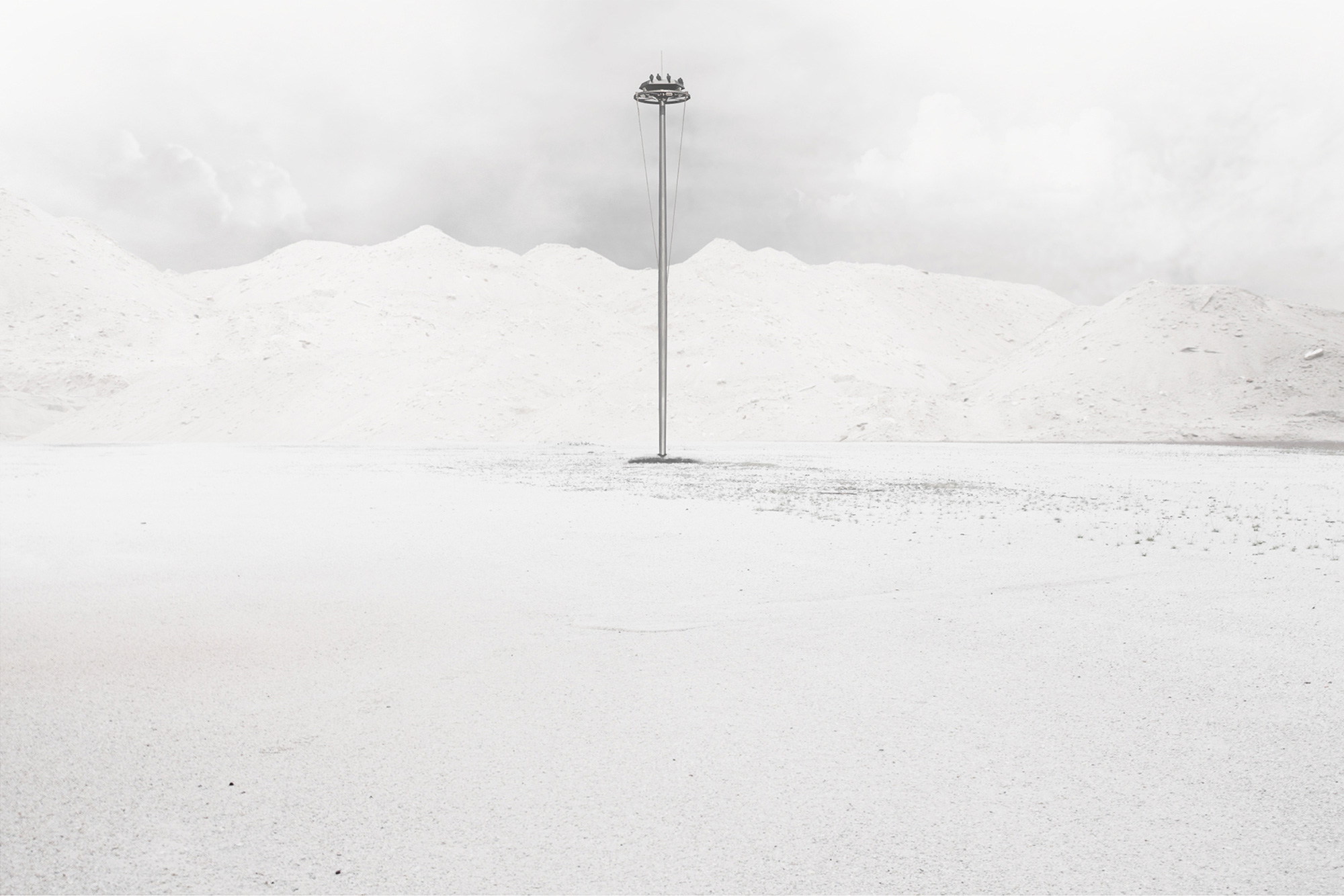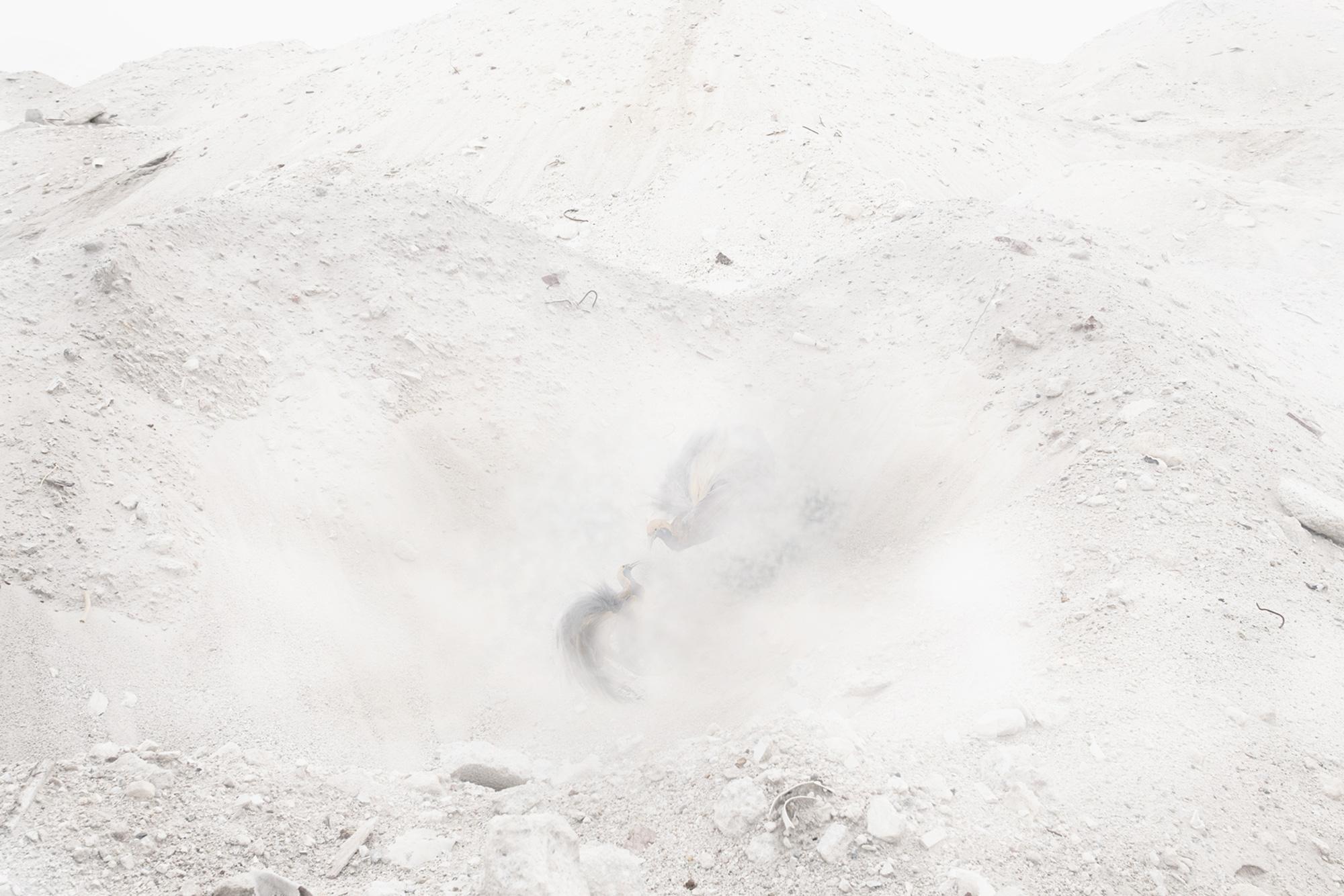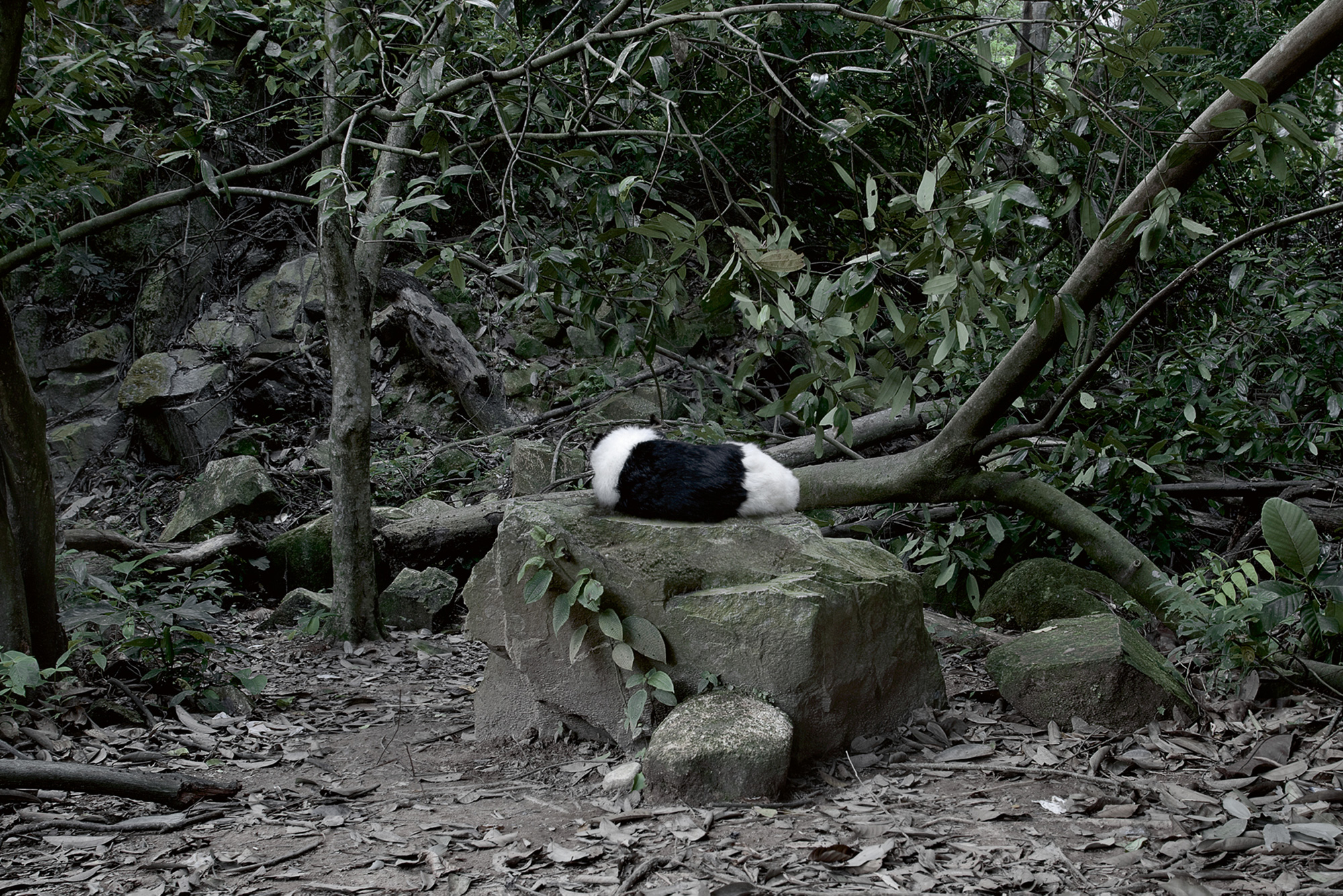Artist Project / Pulau Pejantan
The extraordinary fauna of Sand Forest Island
Institute of Critical Zoologists
An uninhabited island in the Indonesian archipelago first visited by scientists only in 2005, Pulau Pejantan (also known as Sand Forest Island) has recently drawn increasing attention from researchers for its extremely unusual geological features and remarkable biodiversity. Two distinct environmental regions—a central semi-tropical forest, ringed by pale white sand dunes dotted with geothermal oddities like the extraordinary Black Geyser—harbor some six hundred species of fauna, roughly seventy percent of which exist only on the island. From curiosities such as the ghost hare (a black and white animal that seems to share a genetic background with extinct species of both hounds and hares) to spiny burrowing anteaters, brightly colored dune-dwelling rock pheasants, and improbably oversized felines such as the heavy oncela and the Iriamondi cat, Pulau Pejantan provides scientists with an extraordinary opportunity to study what is essentially a closed ecological system.
Conditions are difficult for observation on the remote island. Its peculiar hydrological activity and location in the doldrums of the equatorial region along the Java Trench combine to produce a thick blanket of fog that covers its landmass essentially from sunrise to late afternoon, 365 days a year; as a result, much of the work must be done in poor light. The images of Pulau Pejantan presented on the following pages were taken by Zhao Renhui of the Japan-based Institute of Critical Zoologists on an expedition to the island between January and April 2009.




The Institute of Critical Zoologists (ICZ) is the first interdisciplinary scholarly center dedicated to promoting critical dialogue on the principles and practices of animal spectatorship and animal-related policies in the fields of social sciences, commerce, aesthetics, ecology, and the arts. The institute pursues its mission through research, classification, and exhibition.